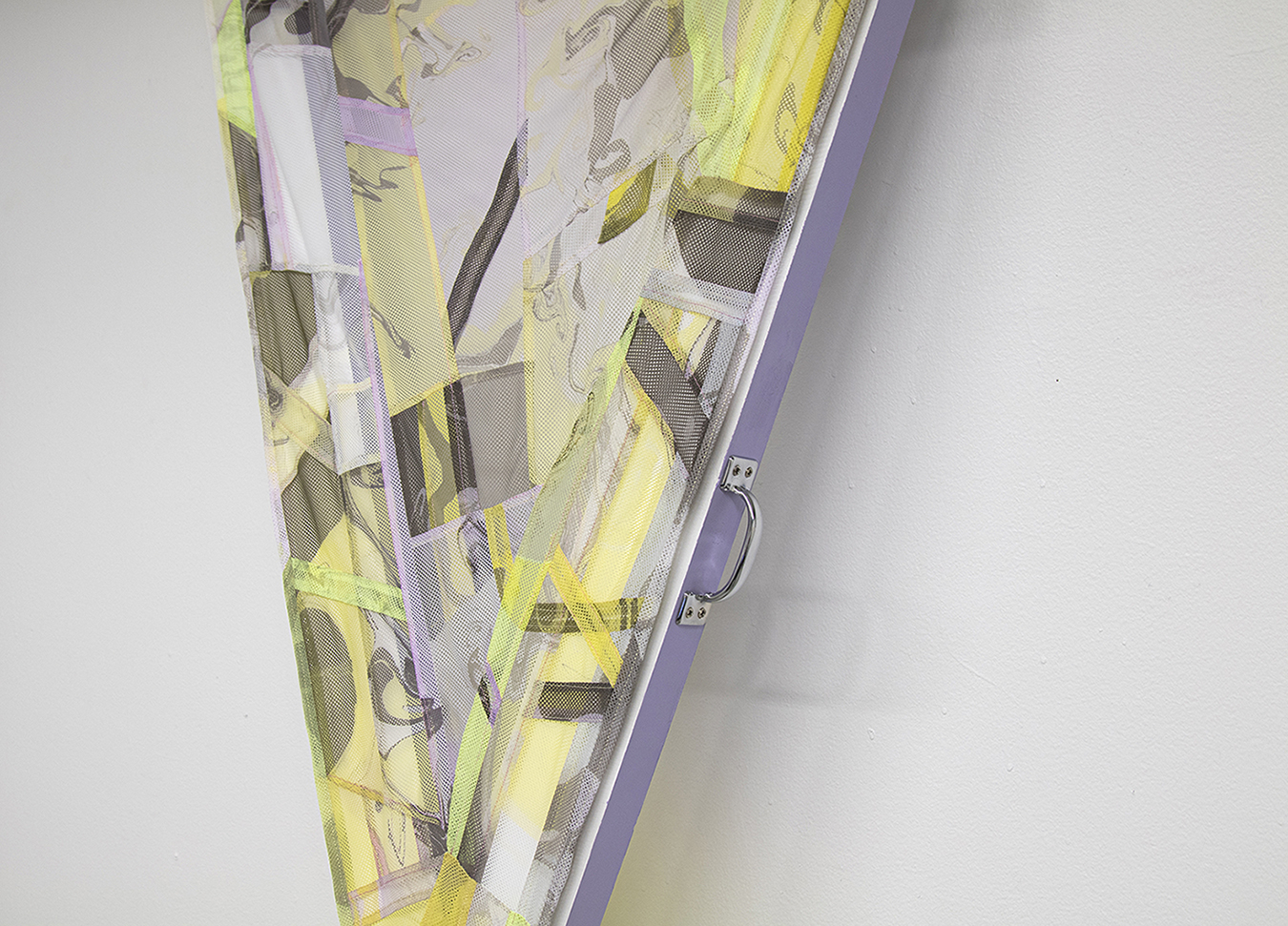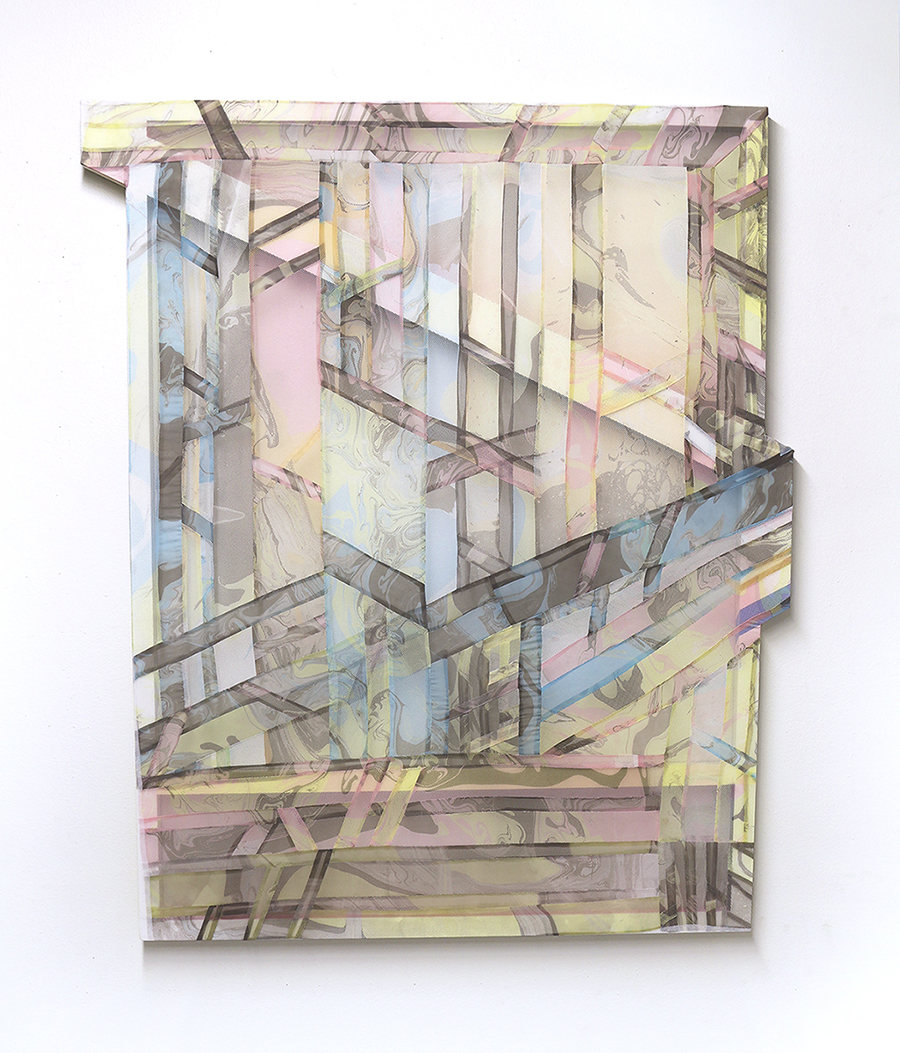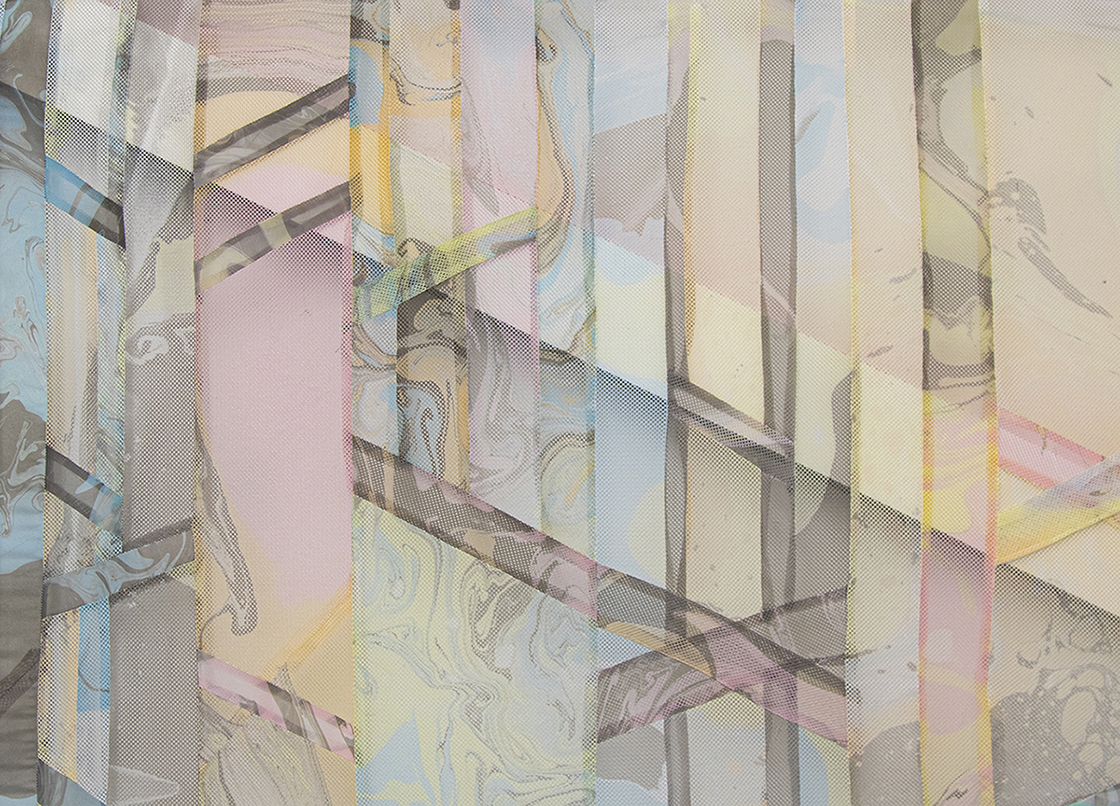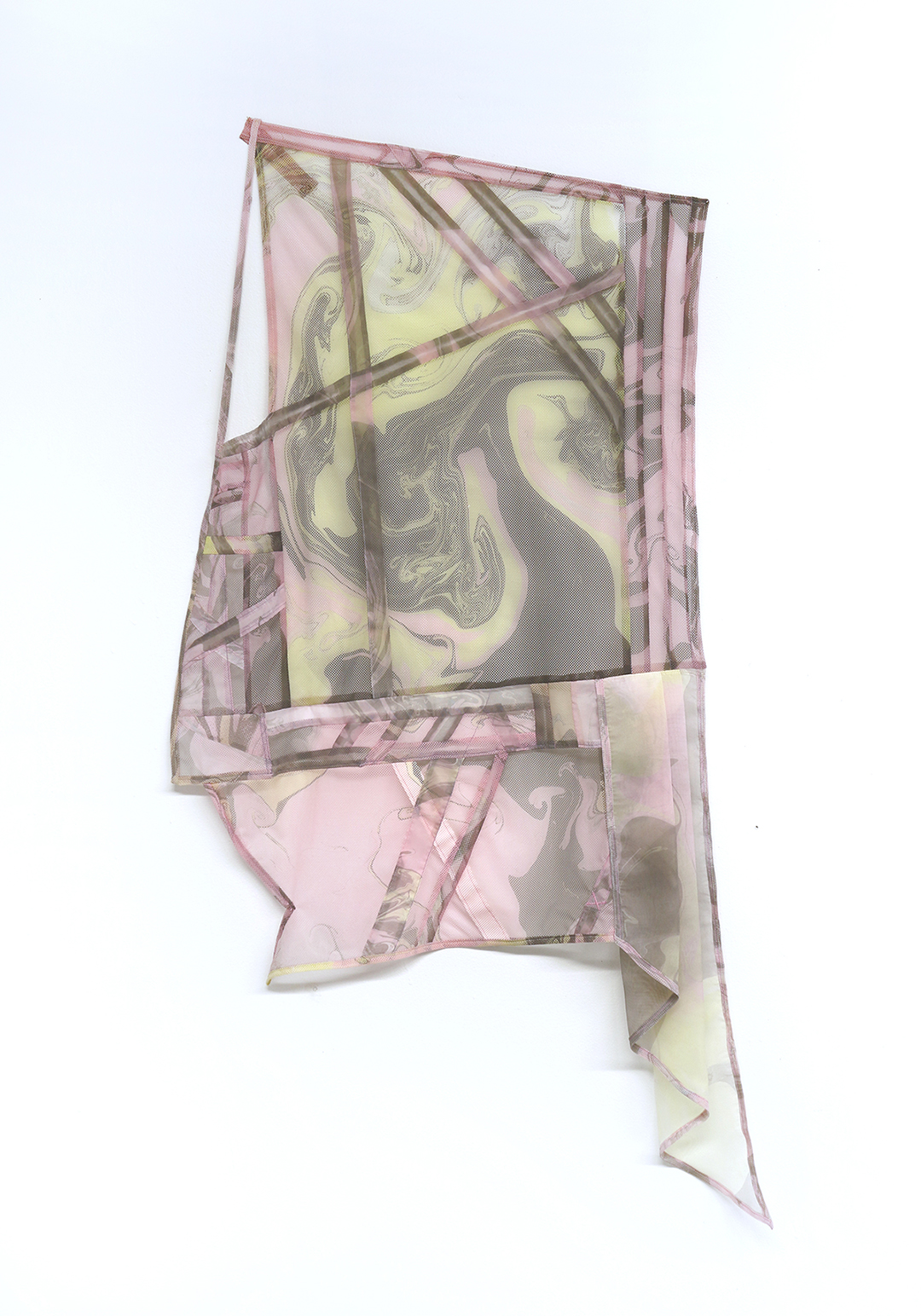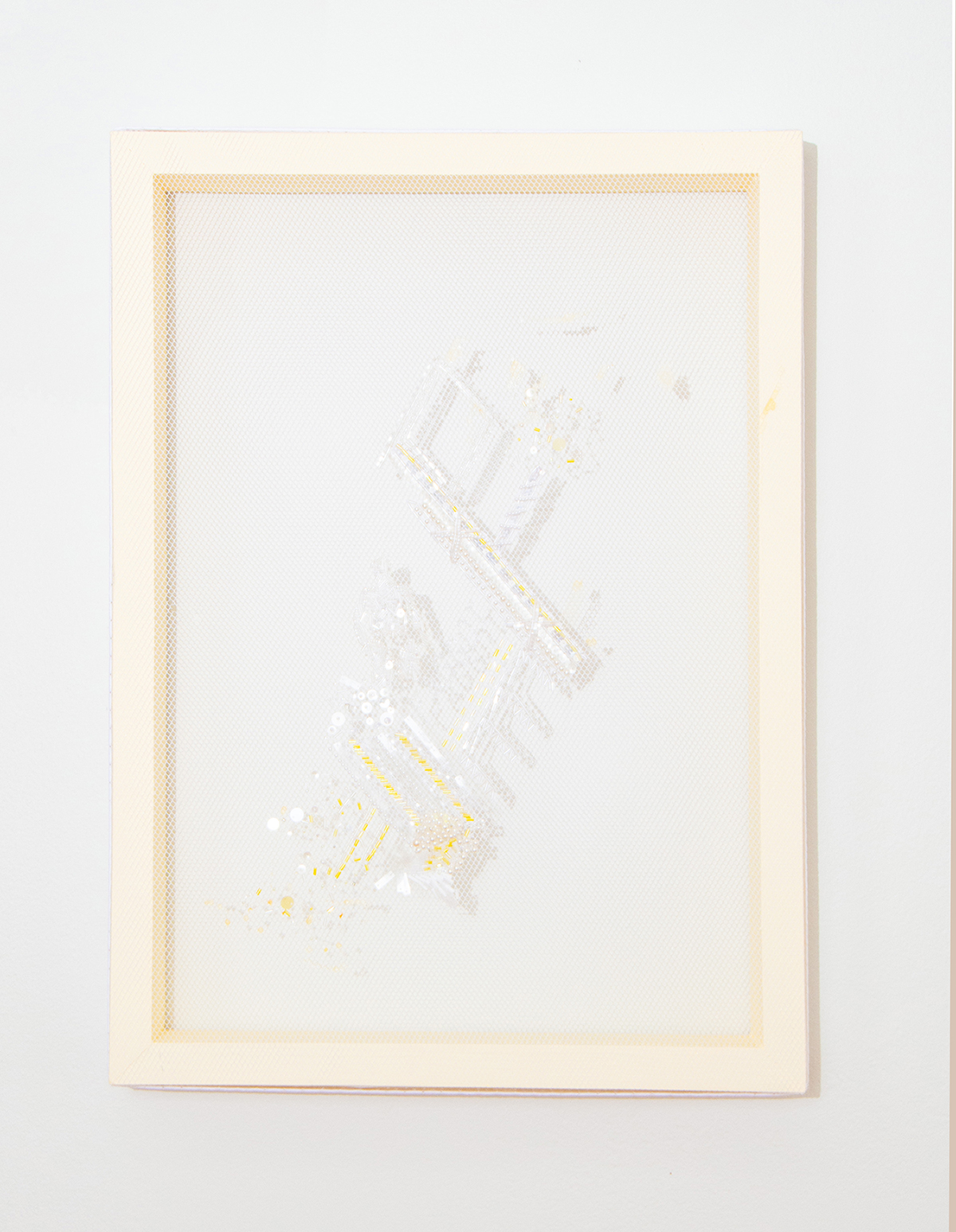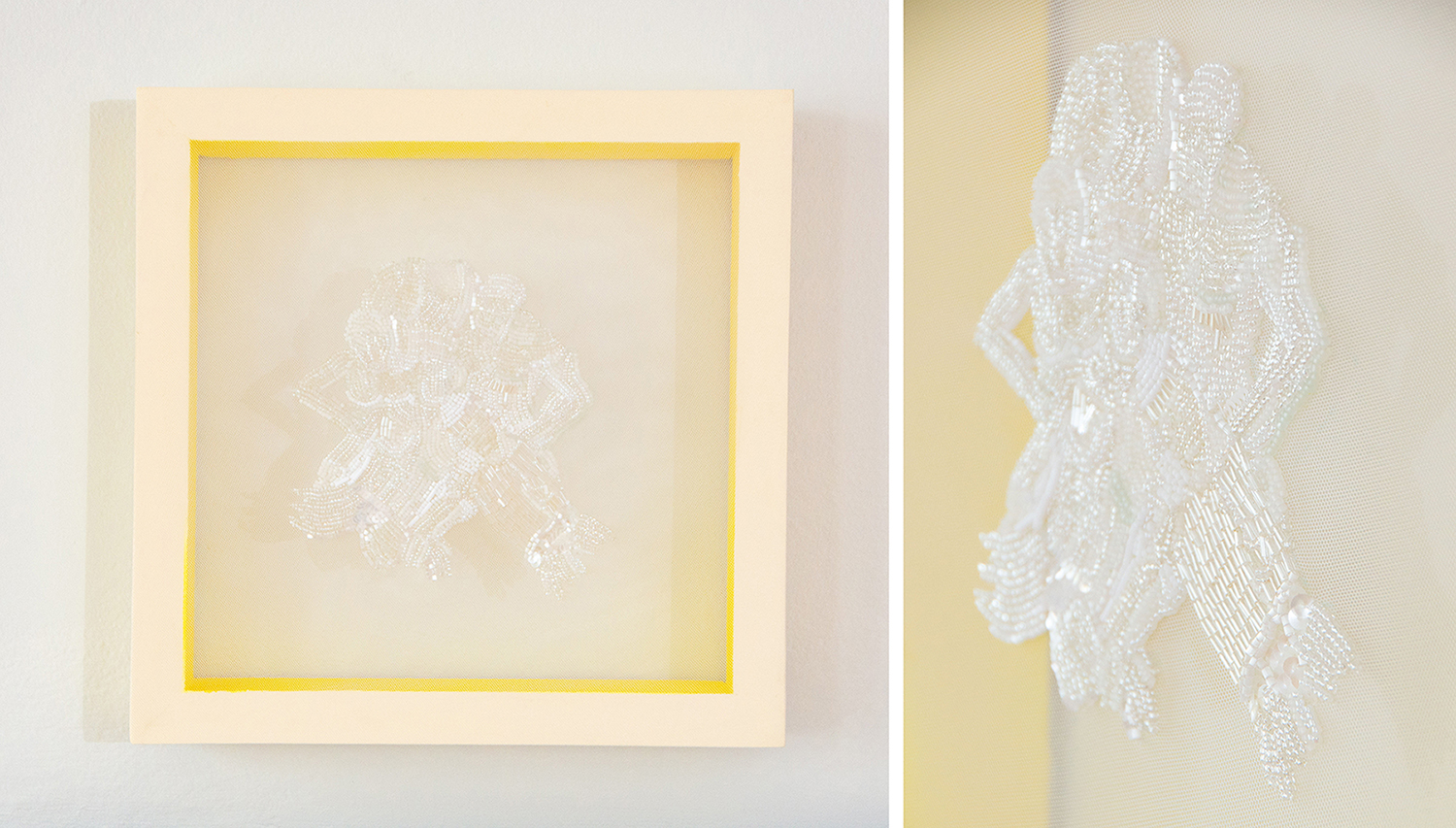Like a knowing wink from a stranger in an anonymous crowd, my work finds pleasure in a tension between what is hidden and what is revealed. Drawing on my queer identity, I explore the ways in which ornamentation, desire, and encoded meanings spill out from and exceed the objects to which they are attached. Mesh fabrics, lace, bits of sportswear garments, pearls and costume jewelry, fixtures and sensations from gay bars are pieced together and recreated in my work in the same manner as my own constitution: haphazard with an attention to detail. For me, these various materials and methods provide ways to ask how queer identities dynamically constitute their own narratives by adapting elements from the dominant culture and using them to their own ends. Decorative excess, composed of layers of materials that only allow for partial transparency, is a means to subvert and resist the supposed heteronormative way things are. I see a parallel between forms of adornment—seen as excessive or artificial such as French Rococo motifs or couture embellishment—and queer experience, which is often derided as deviant, superficial, and nonproductive. I use gendered decoration techniques such as embroidery, beading, marbling and piecework as a strategy for self-determination and aspiration, a place to explore one’s identity and desire.
In addition to these material concerns, I explore abstract forms as tools for re-presentation. Large constructions with stretched mesh have been marbled with pigments, translating memories from gay bars and bath-houses in Chicago and Paris. These, too, have their secrets, since I write reclaimed insults in the swirl of ink that dissolves into these decorative patterns, and I create pieceworks interpreting architectural elements and objects existing in these spaces. Every surface has its depths, only some of which we can see.

